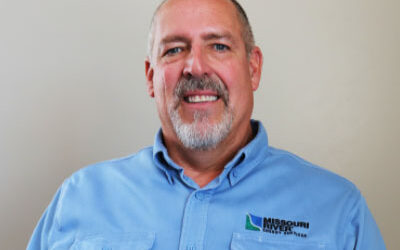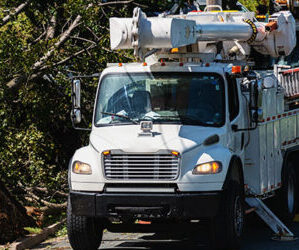It’s true – the possibilities are endless when students are exposed to careers in energy. We have seen hundreds of professionals who educate the energy-enthused workforce of the future to bring fresh, young talent to the industry. These students are poised to join a field that already boasts six million employees, with more on the way.
Dan Spencer, an educator at Western High School in Jackson County, Michigan and Randy Bullock, a teacher at Dinwiddie High School in southern Virginia, never thought they would teach energy classes. Both Dan and Randy now find themselves inspiring students with insight into how and why things work related to energy.
They agree students thrive in energy classes, both those in pursuit of immediate employment after high school, and those who plan to attend a two or four-year collegiate program.
Connecting students to energy careers
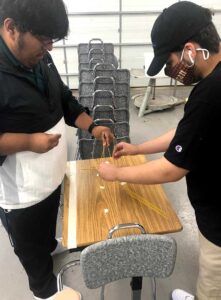 Bullock has been teaching for 30 years. Instructing students about how power is created and used was a natural fit for this inquisitive educator who took an iron apart when he was eight years old just because he wanted to understand how it worked. He hopes that his classes will allow a connection with students like him who have that intellectual curiosity that demands answers. Bullock has “found his people” as all 15 students enrolled in his most recent Energy and Power class received their Energy Industry Fundamentals certification, no small feat for a test that averages a 72% pass rate. Perhaps it was simply the love of learning – or the promise of a BBQ feast and a guaranteed interview with a local energy company that earned a 100% pass rate. These students successfully demonstrated their mastery of power generation, energy regulations, fundamental of energy, the use of personal protection equipment (PPE) and more.
Bullock has been teaching for 30 years. Instructing students about how power is created and used was a natural fit for this inquisitive educator who took an iron apart when he was eight years old just because he wanted to understand how it worked. He hopes that his classes will allow a connection with students like him who have that intellectual curiosity that demands answers. Bullock has “found his people” as all 15 students enrolled in his most recent Energy and Power class received their Energy Industry Fundamentals certification, no small feat for a test that averages a 72% pass rate. Perhaps it was simply the love of learning – or the promise of a BBQ feast and a guaranteed interview with a local energy company that earned a 100% pass rate. These students successfully demonstrated their mastery of power generation, energy regulations, fundamental of energy, the use of personal protection equipment (PPE) and more.
The Dinwiddie students also took third place in a state-wide challenge sponsored by Dominion Energy. The students set up an aquarium, studied the gulf stream, and then built underwater turbines using 3D printers.
Students at Western High School were just introduced to energy curriculum over the past year following the state’s commitment to broaden students’ exposure to career opportunities after high school. The school partnered with Consumers Energy to bring the energy curriculum to life. Representatives from Consumers have supported the in-class instruction in many ways, including bringing team members into the classroom. Spencer said the students have seen first-hand there is opportunity to make a substantial living in the energy industry and that’s been a hook for a lot of the young people with whom he works.
He said, “it’s been cool to see some students realize that they have other options besides four-year college.” While many of Spencer’s students will pursue a higher education path, others have had their eyes opened to employment opportunities available through on-the-job training.
He has found that his instruction has offered “the why” that is so often missing in classrooms today, yet so sought-after by students.
Preparing to teach about energy
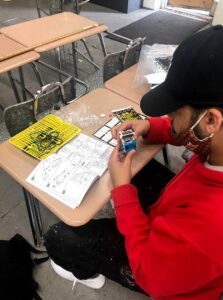 For the past 20 years, Spencer has primarily taught physics and chemistry, but he has been the go-to resource at his school for engineering and science electives, so he was a natural fit to take on energy instruction. With just one year under his belt, he said he loved this new role and was surprised at how much of the coursework was related to other classes he has taught. The energy program allowed him to go deeper and into more practically based applications than some of his other exposure-based classes. His students have made motors, worked with circuits, created robots, and explored solar cells – all areas of study that have helped these young minds understand how things work not only in their homes, but in the world around them.
For the past 20 years, Spencer has primarily taught physics and chemistry, but he has been the go-to resource at his school for engineering and science electives, so he was a natural fit to take on energy instruction. With just one year under his belt, he said he loved this new role and was surprised at how much of the coursework was related to other classes he has taught. The energy program allowed him to go deeper and into more practically based applications than some of his other exposure-based classes. His students have made motors, worked with circuits, created robots, and explored solar cells – all areas of study that have helped these young minds understand how things work not only in their homes, but in the world around them.
For Bullock, energy instruction wasn’t an area of study that was incredibly familiar. He leaned on local energy companies to make the industry relevant to students with in-class presentations on topics like hydropower, cybersecurity, practical experience with things like auto-CAD to design electric systems, delivery of energy, and use of drones.
He also relied on the Center for Energy Workforce Development (CEWD) to help with lesson planning. He said, “the materials are all there for you and you can just take them and make them your own.” Bullock noted CEWD has resources – including labs, toolkits, and materials from the NEED project to prepare students for the EIF testing. He also puts students in charge of developing a shared study guide which he uses as a teaching tool.
Bullock has supplemented classroom instruction with interactive experiences in the field. He takes students to the “A Day in the Life of a Lineworker” program twice a year where they get to put on all the PPE and climb electric poles to get a true taste of the work that is done. Working in an agricultural community, many of his students enjoy hunting, fishing, and other outdoor activities, so a career as a lineworker is particularly appealing to many who seek something other than a desk job. The students are exposed to the multitude of other careers in energy through a bi-annual job fair that allows them to talk with those in engineering roles, technical positions, apprenticeships, and those who support the business of energy.
One of the ways Bullock prepared himself for teaching energy classes was shadowing an employee at Dominion Energy for about three years. From his experiential learning at Dominion and Southside Electric Cooperative, he saw what a great need there is for people interested in energy careers, as a significant number of local employees are expected to retire within the next five years and he saw the vast void for upcoming talent. The demand for these positions is right in the communities in which the students live.
Advice to fellow educators
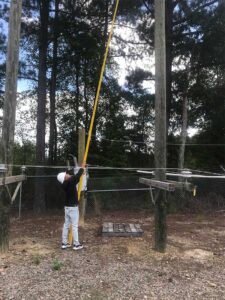 Recognizing it can be intimidating to branch out into unfamiliar teaching territory, both Bullock and Spencer encourage their peers to explore adding energy curriculum to their course offerings because of the way students embrace the curriculum, not to mention the earning potential the sector offers, and the myriad of career options available.
Recognizing it can be intimidating to branch out into unfamiliar teaching territory, both Bullock and Spencer encourage their peers to explore adding energy curriculum to their course offerings because of the way students embrace the curriculum, not to mention the earning potential the sector offers, and the myriad of career options available.
Bullock said he has found pre-requisites in sustainable and renewable energies offer a solid, relatable foundation to students, preparing them for a second class in the fundamentals of energy and power. He noted his school is fortunate to have a STEM lab that supports the practical applications of the coursework.
Spencer encourages those ready to begin energy instruction to give themselves time. His students responded well to year one offerings, but he knows that as he teaches more, he will continue to make more connections to materials he is already familiar with.
Both educators also point to the importance of working with local energy companies to connect students with the field and the breadth of opportunities that exist in the energy sector of tomorrow. Areas of focus such as reinventing infrastructure, harnessing new sources of power, and storing that power are just some of the areas that need talent. The industry also relies heavily on work-ready individuals, leaving high school with an interest in learning their craft from mentors.
Inspiring students with energy curriculum
Educators across the country have been inspired by students’ reaction to the energy curriculum. Several students from Dinwiddie High School have pursued careers in energy. Spencer has seen students thrive in the practice applications of the energy coursework, after struggling a bit in more theoretical science classes.
It may sound cliché, but educators often describe their students as being energized by energy-focused coursework. It offers exposure to an industry that is practical, essential, broad, fast-growing, and offers a strong salary.


